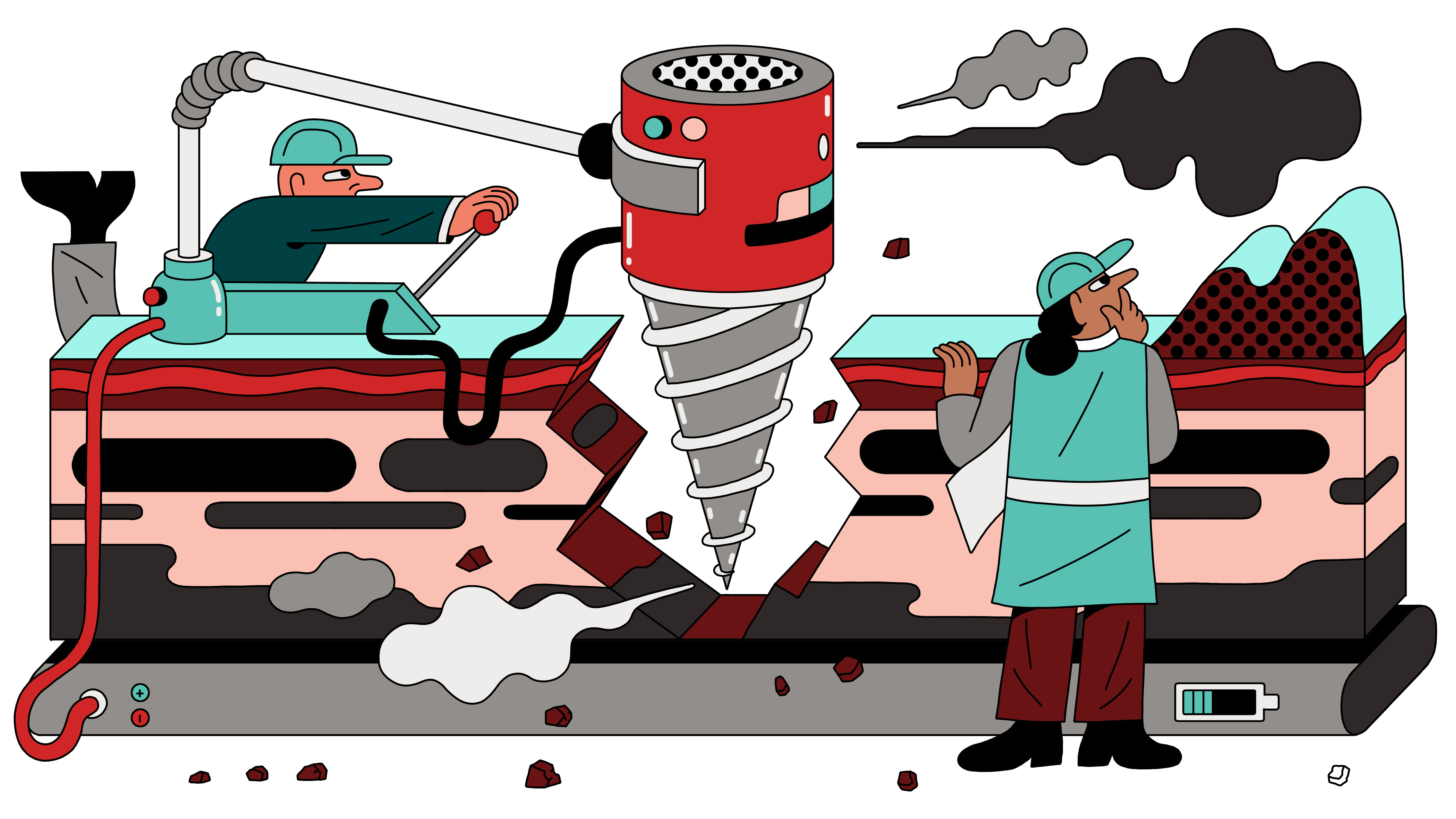Enhanced geothermal systems: 10 Breakthrough Technologies 2024
Advanced drilling technology could unlock the potential of this carbon-free renewable energy source.

WHO
AltaRock Energy, Fervo Energy, Utah FORGE lab
WHEN
3 to 5 years
Geothermal heat, an abundant and carbon-free energy source, offers an alternative to fossil fuels that doesn’t vary with the weather or time of day. However, conventional geothermal plants require specific geological conditions—in particular, permeable rocks with water sources.
Because of this, geothermal accounts for less than 1% of global renewables capacity. But an emerging technology could let us exploit even more of the heat beneath our feet.
Enhanced geothermal systems have been in development since the 1970s. Recent advances show that they could dramatically increase production of renewable energy. Fervo Energy tested one such system last year in Nevada and proved its commercial viability. The company is building another project in Utah, with a goal of providing constant, clean power by 2026.
With enhanced geothermal, companies can access geothermal heat in new locations. Hydraulic fracturing techniques—widely used by the oil and gas industry—are now being used to crack open relatively solid rocks, at depths much greater than existing geothermal wells. Water is then injected into these rocks to generate steam, which subsequently drives turbines to produce electricity.
Fervo also looks to use enhanced geothermal techniques to create what are essentially giant underground batteries for the grid. By building up or relieving pressure in the wells, it can save up energy when demand is low and boost generation when it rises.
The technology is not without potential risks. In particular, the scientific community is divided on how hydraulic fracturing could affect seismic activity. While some believe earthquake risks are minimal, a 2017 incident in South Korea was linked to an enhanced geothermal project.
Several other companies and labs are now advancing pilot projects and research in the field. Washington-based AltaRock Energy is developing specialized techniques to access extremely hot rocks, which could dramatically increase energy output. Utah FORGE, sponsored by the US Department of Energy, is drilling a well that can act as a test bed for enhanced geothermal technologies. Many of these projects are still in the experimental phase, but it’s increasingly clear that enhanced geothermal is a hot topic in the energy world.
Deep Dive
Climate change and energy
The problem with plug-in hybrids? Their drivers.
Plug-in hybrids are often sold as a transition to EVs, but new data from Europe shows we’re still underestimating the emissions they produce.
Harvard has halted its long-planned atmospheric geoengineering experiment
The decision follows years of controversy and the departure of one of the program’s key researchers.
Why hydrogen is losing the race to power cleaner cars
Batteries are dominating zero-emissions vehicles, and the fuel has better uses elsewhere.
Decarbonizing production of energy is a quick win
Clean technologies, including carbon management platforms, enable the global energy industry to play a crucial role in the transition to net zero.
Stay connected
Get the latest updates from
MIT Technology Review
Discover special offers, top stories, upcoming events, and more.